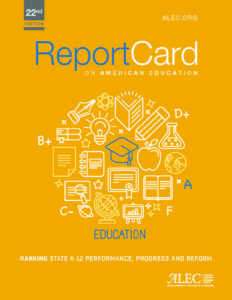
School districts hoard students instead of teaching them: Michael McShane and Jason Bedrick
With the onset of the COVID-19 virus, U.S. citizens are becoming accustomed to irrational hoarding behavior. We just never imagined school districts would start hoarding students.
In mid-March, many states shut down their public schools to contain the spread of the coronavirus. But, in a surprise move, Oklahoma, Oregon, and Pennsylvania also shut down their online charter schools, schools that clearly meet the demands of social distancing.
All three states have since reopened their online schools but have barred them from enrolling new students. The schools may only serve the students who attended prior to the virus-related school closures.
This might seem irrational, but the purpose is clear: preventing families from choosing other options. As a Pennsylvania district school bureaucrat explained, families might be tempted to switch to an online school while their brick and mortar school is inoperable, so the district school lobby pushed to have state policymakers close them down.
“You have got to give the school districts time to make some decisions, make plans, and put alternative learning delivery systems together,” Mark DiRocco, executive director of the Pennsylvania Association of School Administrators, told Pennsylvania public radio, arguing that it is not fair to “allow the [online] charter schools to say, ‘Well we are open for business now.’”
When DiRocco talks about what’s “fair,” he’s not talking about what’s fair for or in the best interests of children. Rather than allowing students to access an already-existing schooling option, the forces of the educational status quo want to hoard them as if they were the last roll of Charmin at Walmart.
Children aren’t rolls of toilet paper. They are not simply funding units for a school district or paths to hire more staff. Our education system is supposed to serve children, but DiRocco and his allies act like the children are there to fund the system.
In Los Angeles, the teachers’ union went even further, citing the coronavirus when advocating for new limits on charter schools (a goal of theirs long before the pandemic). Not ones to let a good crisis go to waste, they’re happy to exploit a pandemic to prevent families from exiting the schools they control.
Fortunately, some states are still putting the needs of students first. Florida, a leader in online education for years, is mobilizing its flagship Florida Virtual School to immediately provide free access to 100 courses for any school in the state, whether traditional public, charter, or private. Florida Virtual is stating that it can enroll 200,000 additional students immediately with the goal of reaching all 2.7 million Florida students by the beginning of May.
Rather than hoard educational opportunities, Florida has shared them. As it turns out, there is more than enough to go around.
The late, great Clayton Christensen remarked that disruptive innovations are usually inferior in some ways to the products that they are replacing. Their target is not consumers who are in love with their current options, but rather those who aren’t. The new innovation is better than nothing, so people give it a try. Some like it, some don’t.
Such is the same with online education. It is difficult under the best of circumstances. The landscape is littered with schools that manifestly failed to educate children. Under the current conditions, these school options are not meant to be exact replacements of the traditional learning environment. These are emergency solutions for emergency times.
Millions of children are sitting at home while their parents scramble to find something for them to do because their school districts cannot get their act together enough to find some way to reach them, even for a fraction of the day. Virtual schools, which already have the infrastructure built and are used to accommodating students with special needs and navigating the host of other challenges that are flummoxing districts, can be a stopgap fix.
Some families might find that an online education environment is preferable to an in-person one. The majority, however, will likely want to return to their normal school when all of this unpleasantness has passed. Most important is empowering parents to choose the learning environment that best fits their child’s needs.
Denying children an emergency education in the time of a pandemic out of a fear that they might like it is grotesque. It should be viewed with the same derision as we view those people with packages of Cottonelle stacked five-high in their shopping cart.
Michael McShane is director of national research, and Jason Bedrick is director of policy at EdChoice. This column originally appeared in the Washington Examiner.



